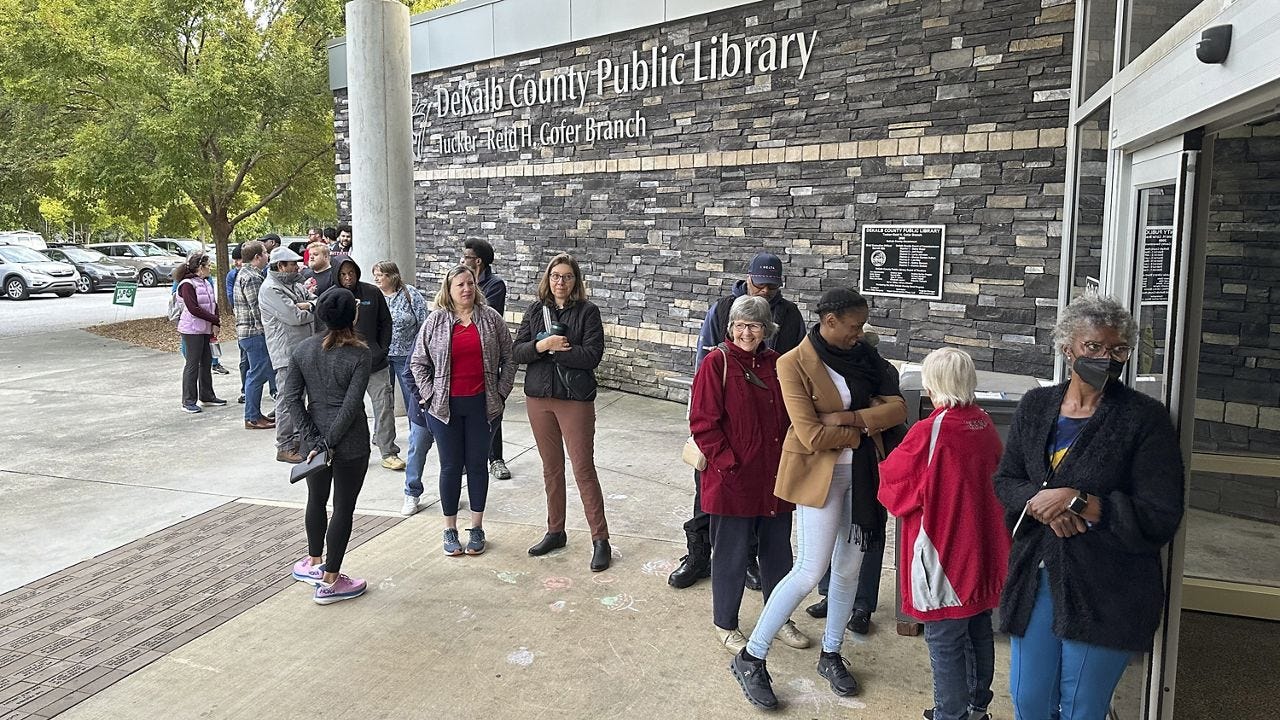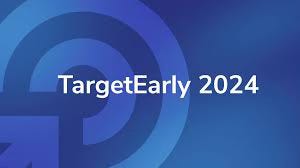By Bruce Watson
In the new American electoral landscape, early voting is becoming the norm. As of yesterday, October 24, voters have cast roughly 24 million ballots, with countless millions more to come. But exactly how many have voted? How many Dems, how many Republicans? How many women, men, young voters, voters of color? And what does all the data mean for November, for the future of democracy?
Targetearly.com tracks early voting numbers down to single digits. Updated daily, the website allows some to panic, others to ponder. But Targetearly.com provides a clear picture of how early voting now entices voters from both parties.

Early voting, Target Early creator Tom Bonier told CBS this week, “is not going to tell us who’s going to win but it’s good ‘bread crumbs.’” Speaking to MSNBC, Bonier painted a sky blue — not royal blue — portrait of early voting so far.
In Michigan, Bonier said, “Detroit is coming out very big, especially older black women with really high turnout numbers. Wisconsin is the same story. In Pennsylvania, Republicans have increased their vote share a bit but 40 percent of Republican male voters so far voted on election day four years ago. So we’re seeing pivoting, not really a sign of intensity but switching the vote mode.”
Early voting surged in 2020, due to the pandemic still raging that fall, with no vaccinations available. Between absentee and early in-person voting, more than 100 million Americans cast ballots before Election Day. That was nearly two-thirds of all votes cast, up from just 36 percent in 2012.
So even though Donald Trump recently told a rally that “the mail-in ballots didn’t work,” they did. In 2020, with Trump discouraging mail-ins and openly challenging their validity, Dems flocked to early voting. When all votes were counted, four out of five Biden voters reported casting early ballots, compared to three out of five Trump voters.
Bonier and other pundits thought post-pandemic numbers would drop off, and they did — slightly. But in 2022, half of all mid-term voters still voted early or absentee. That year, analyzing the data, Bonier was one of the few pundits to correctly predict there would be “no red wave.” This year’s numbers suggest resurgent interest in early voting, with Dems still leading the surge.
“The expectation going into the early vote,” Bonier told MSNBC, “was that we’d see Democrats would be pivoting back to election day and meanwhile that Republicans were going to do the opposite.” Republicans, Bonier noted, regretted Trump’s discouragement of early voting in 2020 and have “invested significantly in moving their people out to vote early. But when we look at these national numbers now, the Democratic margin is only two-tenths of a point behind where it was at this point two years ago, which surprised me.”
Several states started early voting with record turnouts. In Georgia, the opening day on October 16 drew a record 300,000 votes. North Carolina, despite damage from Hurricane Helene, set its state record for first-day turnout - 357,000.
All pundits agree — vote early if you can. Early voting allows voters to avoid lines, but it also helps with GOTV. Early voting lists let grassroots groups and party officials focus their efforts on reaching those yet to vote, not bothering with the millions who have already voted.
A datahead’s dream, Targetearly.com tracks more than mere totals. Using data gathered from state and county tallies, the bottom line can be broken down by gender, race, age, party, marital status, and four other categories.
So far this year, the gap between Democrat and Republican early voting has only narrowed slightly. But you have to look carefully. Because party affiliation is so closely watched, and because half of all early voters are technically “unaffiliated,” Target Early analyzes voters “according to their likely partisan leanings” to create a “Modeled Party,” the number of likely Democrats and Republicans. With caution against reading too much into the interpretation, Target Early shows Dems again doing well.
As of yesterday, Targetearly’s Modeled Democrats led Modeled Republicans 48.9 to 41.6 percent, only slightly less than in 2020.
“There is more data to come,” Bonier said, “but probably some signs that the Harris campaign is enthusiastic enough at this point.”
Tom Bonier will be on the Friday Power Lunch podcast today (10/25/2024 at 12pm ET) discussing the latest early voting numbers. To attend, click here.








Can't wait to see Tom Bonier talk about early voting numbers on the Friday Power Lunch today at 12pm ET. Here's the link to register https://tinyurl.com/2024fpl
Just reading elsewhere from a smart source (@nevbear1 at Threads) that number of Republicans who will vote for Harris - "crossover" voters will hit a record high (and have seen some forecasts that 9% of GOP will not vote for Trump).
IF that's the case, I'm less worried that the GOP has "closed the gap" on early voting. And I think that lessens their election day turnout. Still a vote is still a vote, regardless of when it's cast.
Thoughts?